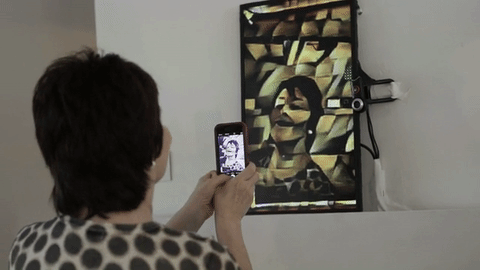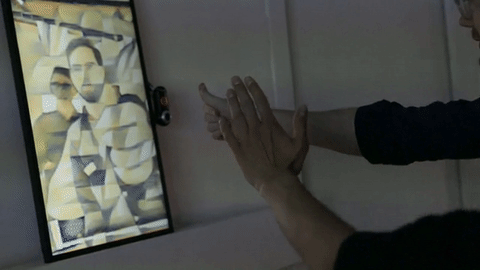


Stand in front of the “Cubist Mirror,” and you'll see your face looking back at you. But it's a version of your face as Picasso might paint it.
Artist and programmer Gene Kogan developed the Cubist Mirror for “alt-AI,” a conference about art and artificial intelligence that took place this past May at the School for Poetic Computation in New York.
Kogan credits the open-source community for making his software possible. He based it on the open-source style transfer work of Yusuke Tomoto, which in turn used information from a previously published research paper.
“A lot of the software in machine-learning circles is open source these days,” Kogan says. “That's an inspiring thing for me.” Style transfer development has incubated rapidly in this collaborative environment, as the progress of Kogan's project demonstrates. Earlier this year, the style transfer he was working on took minutes to render. “Not much like a mirror,” he says. Now the rate approaches multiple frames per second.

If the machine learning mirror got your attention, that is Kogan's goal, but only to direct it to the little-discussed applications of machine learning that are all around us. “Machine learning is relevant in many domains,” Kogan says. “Art can be an interesting way of starting a conversation about these very powerful technologies that are growing in their prominence every day.” He worries that engineers are not giving enough thought to the built-in biases of these systems.
Kogan's hope is that promoting machine art, like the Cubist Mirror, will bring about awareness and discussion of real-world impacts. "The more people are literate about what these algorithms can do," he says, "the more they'll be concerned with using them in unjust ways."


EDITOR'S PICKS







